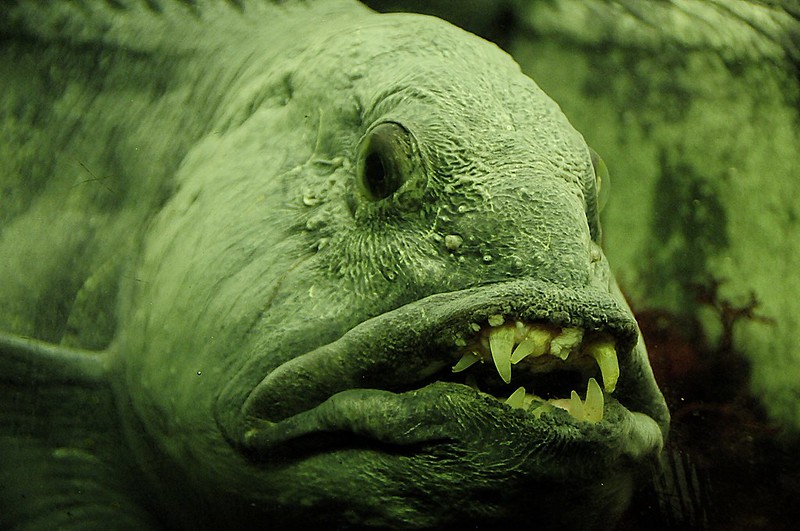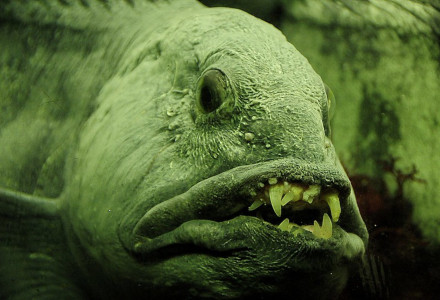
Atlantic Wolffish Facts
- First of all, the remarkable Atlantic Wolffish constitutes the largest known member of the wolffish family. But, the sincerely fascinating creature also goes by numerous other common names. These many alternate names it goes by include such terms as seawolf, ocean catfish, the wolf eel, along with several others.
- However, it remains best known among researchers for an incredible physiological trait that developed during its evolution. That’s because this otherwise unassuming seeming species of fish has a very special blood. This literally contains a natural form of antifreeze, to protect it against the extreme cold of its environment.
- Quite sadly, the population of the Atlantic Wolffish numbers of the species overall began plummeting dramatically during the 1950’s. Not surprisingly, this sharp decline occurred mainly due to the effects of overfishing, in addition to bycatch. However, for the moment, the IUCN does not yet show it on the Red List of Threatened Species.
Related Articles
Lumpfish Pinecone Fish Stonefish
Atlantic Wolffish Physical Drescription
Perhaps most notably, individuals of the Atlantic Wolffish attain widely varying sizes. But, this trait appears in many species. This primarily occurs due to various factors, such as local conditions, food supply, etc.
However, the largest known specimen attained a total length of about 5 ft (1.5 m), and weighed roughly 40 lb (18 kg). In addition, unlike many creatures, this fascinating animal does not display any known form of sexual dimorphism.
The physical appearance also varies between individuals, at least in terms of coloring. These colors range from a drab olive-green, to a purplish-brown, and bluish-gray. Yet, its best known features remains the structure of its teeth. In addition to sheer numbers, the teeth of the Atlantic Wolffish also develops four to six fang-like teeth.
- Kingdom: Animalia
- Phylum: Chordata
- Class: Actinopterygii
- Order: Perciformes
- Family: Anarhichadidae
- Genus: Anafhichas
- Species: A. lupus
Atlantic Wolffish Distribution, Habitat, and Ecology
Firstly, as its name suggest, the Atlantic Wolffish inhabits a broad portion of the Atlantic Ocean. However, markedly smaller populations of the animal also inhabit the Arctic Ocean. Its range extends from Iceland in the north, to as far south as Cape Hatteras, North Carolina, in the United States.
Within that area, this variety of fish typically lives at fairly shallow depths ranging from 66 -1,640 ft (20 – 500 m). Yet, in its specific area of habitation, this depth constitutes the ocean floor. There, the Atlantic Wolffish typically lives in the various naturally occurring caves and rocky crevices.
Furthermore, it remains a highly stationary species. As a result, most individuals rarely leave their particular home. Rather interestingly, it does not feed on fish. Instead, it has a diet consisting almost of crustaceans, echinoderms, and molluscs. Its powerful jaws and teeth make this possible.
Species Sharing Its Range
Sea Spider American Lobster Barnacle
Check out our other articles on 7 Fabulous South American Plants, Bee Hummingbird, Dallol Hydrothermal Field, Boojum Tree, Picasso Bug, Eastern Diamondback Rattlesnake

